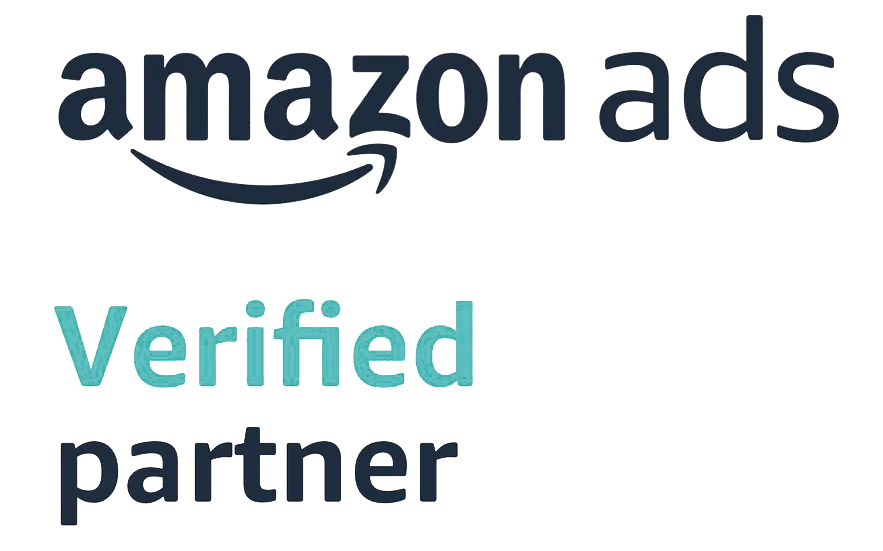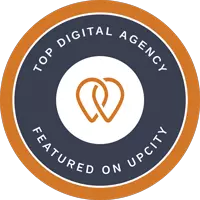A Guide To Gaining Better Visibility On Search Engine Results Pages
SEV, or Search Engine Visibility, is a business or organization’s overall appearance in search results. This is a paid and organic compilation that looks at ranking, impression share and what we’ll refer to as share-of-screen. It is a more strategic view of search, rather than the typical tactic approach to SEO or PPC. SEV leverages synergies across different search tactics and holistically approaches search.
What does SEV Mean? Get More Here
Understanding how to gain more prominence and visibility is dependent on understanding the Search Engine Results Pages (SERPs). SERPs consist of paid and organic listings.
What are the types of organic search listings and paid search ads?
A brief list of organic and paid SERP listings are as follows:
| Organic Search Listings | Paid Search Listings |
| A. Featured Snippets (Questions & Lists) | E. Product Listing Ads |
| B. Local Pack / GMB Listings | F. Local Service Ads |
| C. Video / Image Pack | G. Paid Search Results |
| D. Standard Listings | H. Paid Map Ads |
- Featured Snippets: These SERP listings show up in response to search queries with question words, “What is…”, “How to…” and so on, as well as also showing up for list-based queries “10 best …”, “5 ways for …”, etc. These are pulled from websites that match the search query, have proper schema in place and are deemed relevant.
- Local Pack / GMB Listings: These are location-based search results that show up in the map panel of Google SERPs when the business matches the search query and proximity of the location of search or geographic search query indicator. Likewise, the individual GMBs listings (similar to the Yelp placement on Apple or Bing Places on Bing Search) is likely the largest and most prominent positioning a local business can gain. These show up on the right hand side of search results but are limited to direct, branded search queries or search queries that your business has absolute dominance over.
- Video/Image Pack: These are video and image snippets that show up directly in search results. These images are pulled from websites, Google My Business profiles and social media, while the videos are mostly pulled from YouTube.
- Standard Listings: These are the typical search results that Google was founded on, that generally include a headline, URL and description, while some others do include additional structured snippets.
- Product Listing Ads: These ads are specific to shopping ads and require a business to have a Google Merchant Center account that is connected to Google Ads.
- Local Service Ads: Local Service ads are the service-industries version of Product Listing Ads (PLAs) and show up along the top of search results. These ads are accompanied by a “Google Guarantee” and require a specialized setup for service businesses to be included.
- Paid Search Ads: Similar in look and structure to standard search ads, paid search ads show up above and sometimes below the organic standard search ads results and are accompanied by an “AD” label indicating they are paid placements.
- Paid Map Ads: Paid map ads show up above organic map placements in Google’s Map Pack and Map’s Search.
This is a non-exhaustive list of SERP placements. Notably absent are Twitter and news results, and related searches, as well as further breakdowns of what can be included within each of the above.
To promote your SEV, on relevant terms you must increase your ranking (as close to the top as possible), increase your impression share (paid and organic) and take up more SERP real estate to promote your share-of-screen.
Note: 100% impression share on paid search does not really exist in practice, it is not obtainable and is not necessarily beneficial. This is even more pertinent for SEV, as a company or organization is unlikely to ever obtain 100% SEV and considering the potential resource outlay and lack of return on every search query, it may be more harmful than helpful. Keep your SEV strategy focused on business growth.
Why do I want my business showing up multiple times on a search result?
The SERP landscape is a synergistic one with initiatives focused on benefiting one area of search supporting others. This is as simple as on-page content optimization to support your standard organic search listings also benefiting your paid search quality score through your landing page quality. It’s even more specific with image factors supporting your website’s ability to rank in the organic image gallery, also benefiting your Google My Business Local Pack/Graph listings.
Fact: A study by Google indicates that there is as much as an 89% lift in search clicks when paid ads are coupled with organic search results.
Simply put, the more you are showing up in search results and the larger your share-of-screen is, the more your building your trust and authority with a search user, the more repetition you are getting with the search user and the more likely that search user is to take action on one of your business’s listings, which exponentially increases over your competition with only single listings.
This being said, search engines like Google have reduced the number of times a single domain can show up in standard paid and organic listing search results; however, this only affects within search placement type (i.e. search engines reducing multiple organic standard listings for a single domain) not across different ones (i.e. a single domain can have a paid and organic map listing, local service ad, text ad and standard search listing).
How Can I Increase My Website’s Search Engine Visibility?
Once we’ve properly understood SERP composition and placements of particular ads on each, we can then begin to formulate a strategy around increasing your websites SEV.
SEV Step 1: Keyword Focus
Our first step in promoting SEV is to determine which search queries we want to promote our visibility for. Let’s focus on keywords relevant to your business, and ideally ones that will generate real value to your bottom line (this reference is intentionally geared to profit and not just revenue).
Understanding the types of search results that exist really provides a foundation for a SEV strategy:

Image: Corkboard Concepts – Search Engine Visibility
Generally speaking, a website’s SEV strategy should be more robust for Transactional Search Queries and lighter on Informational and Navigational (especially when considering paid media). These transactional queries need to then be prioritized based on the types of business returns are available.
SEV Step 2: Organizing Content & Digital Properties
Once search queries are defined, it’s time to begin looking at your content and creative assets and your digital properties.
Your content and creative assets include blogs/articles, videos, images, and more. Get a better understanding of how these assets match with your search queries and how they’re labeled and aligned.
Make sure you maximize the placement of your organization’s content.
Digital properties range from the obvious – your website and Google My Business page to the often overlooked in terms of a search strategy – YouTube, social media properties, review websites, hiring websites, local/relevant media, and even Wikipedia.
Note: Your search engine visibility strategy can quickly turn against you if the items you’re gaining visibility on are not positive. Poor reviews, negative PR coverage and mismatched location information can cause more problems for your business than it benefits from the added visibility.
Maximize placements:
The goal is going to be maximizing the placement and usage of all of these. Videos posted on social media should also be used on YouTube. Simply changing end-cards or adding for-platform annotations in the YouTube video’s description is enough to make it unique. Likewise, taking that same video or image and embedded it in different blogs or pages is enough to further utilize this content and maximize exposure of it.
Connect Placements:
Taking similar content pieces and connecting them adds another level of connection and awareness to your content. Blogs that are loosely connected by a reference to “Window Repair Tips” should be connected if they 1) continue the conversation, 2) discuss similar projects, 3) highlight peripheral services, 4) provide any type of value to the reader!
A wise setup for a Window Services company, would be as follows:
Organic Content:
- Blog // Top 5 Reasons Why Your Windows May Leak Water
- Blog // How To Fix Leaking Windows
- Video // Protecting Your Windows From Heavy Rain
- Website Placement // Leaking Window Repair
- Map Placement // Leaking Window Repair Near Me
Ensuring that these content pieces are helpful, pertinent to the search query and include a mix of creative assets aside from just the text, like images, diagrams/illustrations and even infographics.
Paid Content:
- Local Services Ad // Leaking Window Repair
- Paid Search Ad // Leaking Window Repair
- Paid Map Ad // Leaking Window Repair Near Me
In an ideal scenario where a search query like, “How to fix leaking windows” triggers as many of these as possible, your business could effectively be placed in nearly every component of the search results! Based on the overall components of a Google SERP, a business following the above could have placement in 10 out of 31 non-image search results! That’s 32% of coverage on the first page of Google Search Results, compared to a competitor that may just have an ad in the search results 1 out of 31 placements, or a 3 percent coverage.
Note: Including content and targeting on all of these does not guarantee placement, nor does covering every component of SERP guarantee Google will even use those components when display results.
SEV Step 3: Maximizing Size of Placement
The percent of placements is only a stepping stone to true Search Engine Visibility; however, not all placements are created equal. 2nd and 3rd standard organic or paid ads do not command as much placement as the 1st placement can in each, nor do either of those compare to the total amount of space as the Local Business Graph or Knowledge graph command on the right hand side of the desktop search results.
Image optimization
Adding as many images to your website and Google My Business as possible. Further optimizing these with accurate descriptions, ALT Tags and more will ensure that they are properly indexed and recalled during searches. Paid Search Ads – enabling more, or really as many pertinent Ad Extensions in the Google Ads platform is ideal. Page, call out, phone call, request quote, location, structured snippets, and more all increase the size of your search ad.
Structured Snippets
Enabling structured snippets on your organic search results through Google Search Console and structured snippets on your website will help you gain more real estate on search results by possibly adding the following and even more:
- Search Bar
- Page extensions/Deep Links
- Review Bar
Google My Business Usage
GMB has a plethora of tools and features that it suggests businesses use. Listing products and services on your Google My Business page, as well as creating posts, updates and gaining reviews all take up more placements on the side.
Social Media & Reviews
These channels all populate in Google Search Results quite prominently as organic text listings, as well as reviews (both from Google and non-Google sites) further being populated into the GMB panel.
If all of these done properly, a business with 32% of all of the placements can actually gain closer to 75% of total real estate on Google’s first page of desktop search results – which is further amplified with above-the-fold type search queries!
For your next search focus, try to maintain a more strategic, bigger-picture view of the search landscape and look past SEO and PPC to the connected benefits of SEV.




